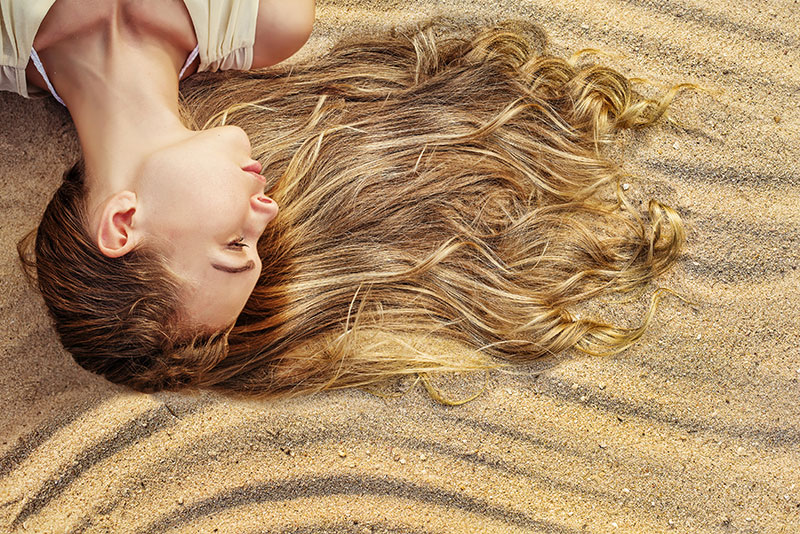
¿Cómo proteger el cabello durante el verano?
Durante los meses estivales, nuestro cabello se ve expuesto a multitud de agresiones externas que pueden deteriorarlo, haciendo que luzca sin vida, más seco, débil, quebradizo y apagado e, incluso, que pueda llegar a caerse, ya que los efectos negativos del verano afectan por igual tanto al pelo como al cuero cabelludo. Como son meses complicados para preservar la salud capilar es necesario saber cómo cuidar del cabello de forma óptima. Por ello, desde clínica capilar Insparya de Madrid, hemos aprovechado nuestra reciente apertura internacional para reunir una serie de recomendaciones y medidas de prevención en un decálogo que nos permitirá atenuar los daños y salvaguardar la salud de nuestro cabello durante los meses de más calor.

- Hidratación. La exposición al sol, el cloro de las piscinas y la sal de mar dejan el cabello seco y sin vitalidad. Por ese motivo es fundamental hidratar el cabello en esta época del año con productos que mejoren la estructura del cabello y que le devuelvan el brillo. Pero hay que tener en cuenta que hay que poner mucha atención a la fórmula de los productos: el colágeno es un ingrediente siempre bienvenido, ya que fortalece el cabello, ayudándolo a crecer.
- Sombreros y gorras. Su uso es beneficioso, ya que protegen el cabello de la radiación ultravioleta. Sin embargo, no se debe abusar de estos complementos ya que sofocan el cuero cabelludo, que también necesita ‘respirar’.
- Evita recoger el pelo. En verano, los recogidos triunfan por su comodidad, pero este hábito daña el pelo, especialmente si aún está húmedo. La tensión continuada sobre el cabello, ya sea por las gomas de pelo o por cepillos demasiado agresivos, puede ser también causa de caída: la llamada ‘alopecia por tracción´. En el caso de usar gomas de pelo para recogerlo, es importante vigilar el material del que estén hechos. Son preferibles los de silicona y aquellos revestidos de un material que no dañe el cabello.
- Secar el cuero cabelludo. Aunque en verano se permita el secado del cabello al aire, el secador es la mejor alternativa para secar el cuero cabelludo, siempre y cuando se mantenga a un palmo de distancia de la cabeza, con aire frío o primera posición de calor.
- Lavado tras el baño. Tras exponer el pelo al sol, el mar y la piscina, se deberá lavar con agua tibia o fresca, ya que el agua caliente deshidrata el cabello y perjudica a las proteínas capilares.
- Lavado antes del baño. Pasar el pelo por agua antes de entrar en la piscina hace que el cabello absorba menos agua y, por tanto, que quede menos expuesto a sus sustancias, como el cloro, un desinfectante que perjudica la queratina del cabello.
- Alimentación. Una correcta elección de alimentos es siempre un tratamiento excelente para el cabello. Durante el verano, es importante no olvidarse de alimentos como las sardinas, la caballa, las nueces y el salmón (ricos en ácidos grasos omega 3 y omega 6, nutrientes que promueven la textura del cabello) cítricos (ya que la vitamina C mejora la circulación en el cuero cabelludo) y zanahoria, calabaza, melocotón y albaricoque, cuyos nutritivos carotenos son cruciales para la prevención de la caspa y la caída. Y, por supuesto, tomar mucha agua, crucial para hidratar la estructura interna del cabello.
- Evitar tintes. Los tintes, en general, dañan el cabello. Recurrir a ellos en verano no es la decisión más acertada. Después de un tratamiento de color, un tinte, una permanente o la aplicación de reflejos, el cabello está en su punto más vulnerable. Por eso es recomendable evitar la piscina durante al menos una semana para que los compuestos químicos se asienten y así prevenir cualquier reacción química con el cloro y otros productos que pueden hacer que el pelo se tiña de verde, una decoloración prematura, deshidratación y rotura, entre otras consecuencias.
- Uso de protectores solares. Durante el verano, igual que hacemos con nuestra piel, es importante el uso de protectores solares con regularidad, aplicándolo según las indicaciones para que la barrera física que aportan a nuestro cabello se mantenga siempre activa. Los más adecuados son aquellos con filtros UV y con ingredientes naturales y suaves que no agreden el cuero cabelludo, sino que lo protegen.
- Protectores contra el cloro. Algunos de los protectores solares para el pelo también incorporan agentes protectores frente al cloro, ofreciendo una protección capilar más completa, hidratándolo y reparando las fibras de nuestro cabello. Estos productos crean una película que protege al pelo del sol, la deshidratación y la pérdida de color que puede causar el contacto con el cloro.



